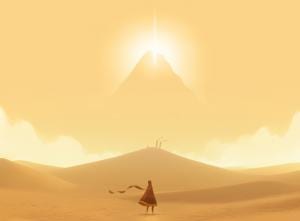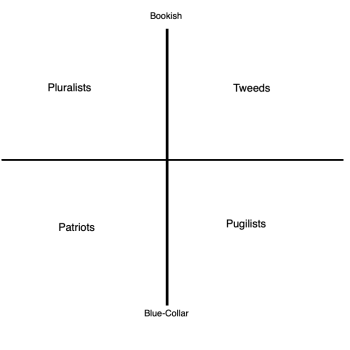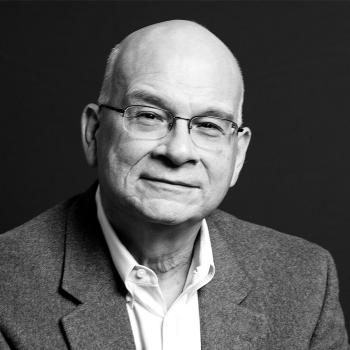
I have a soft spot for indie video games, in particular “walking simulators” that deprioritize fast-paced action in favor of contemplative experience. 2016’s Firewatch, one of my favorites, places the player into the role of a fire lookout in the Shoshone National Forest: the game forces the player to experience profound isolation while confronting the tension between the beauty and pitilessness of nature.
But up until a few weeks ago, I’d never played 2012’s Journey—the godfather of the genre and one of the most critically acclaimed titles of all time.
In Journey, the player controls a hooded, not-quite-human figure in the process of crossing a vast desert. The destination? A shining light at the top of a distant mountain—no more, no less. As the player progresses through the desert, they encounter shreds of living cloth that may be woven together to form bridges across ruined colonnades, as well as enormous flying metal serpents that stalk and attack the traveler. The game is almost totally devoid of dialogue, but backed by a haunting, string-driven musical score.
As originally conceived, Journey (with a little help from the PlayStation Network) places the player into encounter with other human travelers also progressing towards the mountain. The only form of communication permitted is a single musical note, which may be sung with greater or lesser intensity. Only at the end of the game are the other players’ usernames revealed.
Plenty of commentators have described Journeyas an uncommonly “spiritual” experience—not a phrase typically associated with video gaming. The touchstone of this spirituality, many writers have explained, is the game’s sense of longing for human connection, of struggling to communicate with other pilgrims on the same path. I’ll admit that I’m not overly fond of this interpretation. To treat the incorporation of other players into the experience as the locus of Journey’s spirituality is to frame the religious sense as something constructed between people in the face of a forbidding, hostile cosmos. It is, in short, to suggest that spiritual insight is more therapeutic than true.
But I played Journey on iOS, without the same web-connected infrastructure. And as a result, my experience was quite different—I didn’t find Journey to be a parable of modern DIY spirituality, but rather a meditative study of solitude and presence. It is quite possible, as the Desert Fathers of the early church well knew, to experience the silence of the desert as an opportunity for openness to genuine transcendence. And this is the aspect of Journey that fascinates me the most.
The Wisdom of the Desert, a translation of the Desert Fathers’ saying by Thomas Merton, recounts the following anecdote:
A certain Philosopher asked St. Anthony: Father, how can you be so happy when you are deprived of the consolation of books? Anthony replied: My book, O philosopher, is the nature of created things, and any time I want to read the words of God, the book is before me.
This is the sense I took from Journey: awareness of the world not as a place of threat—as in so many video games, which feature enemies popping up from behind every stone—but as a place of intrinsic wonder, one that would be objectively beautiful even if no human eyes were there to behold it.
Nor is the eponymous “journey” an entirely isolating experience. At the end of each stage, a vision of a humanoid figure bathed in light beckons the player to continue on—and in the game’s climactic moments, when the player character can no longer press on through a driving snowstorm, a chorus of identical glowing figures revives the player and draws them onward and upward, toward the mountain’s summit. There is, in other words, a distinctly personal dimension to the strange world of Journey, whether or not the player chooses to experience the game alone.
Just as the Desert Fathers were not hearing merely the echoes of their own thoughts, but truly communing with God, so Journey invites the player into encounter with a spirituality they do not themselves construct or superimpose on the natural realm. And that is a strangely haunting and beautiful insight for any game to express.











